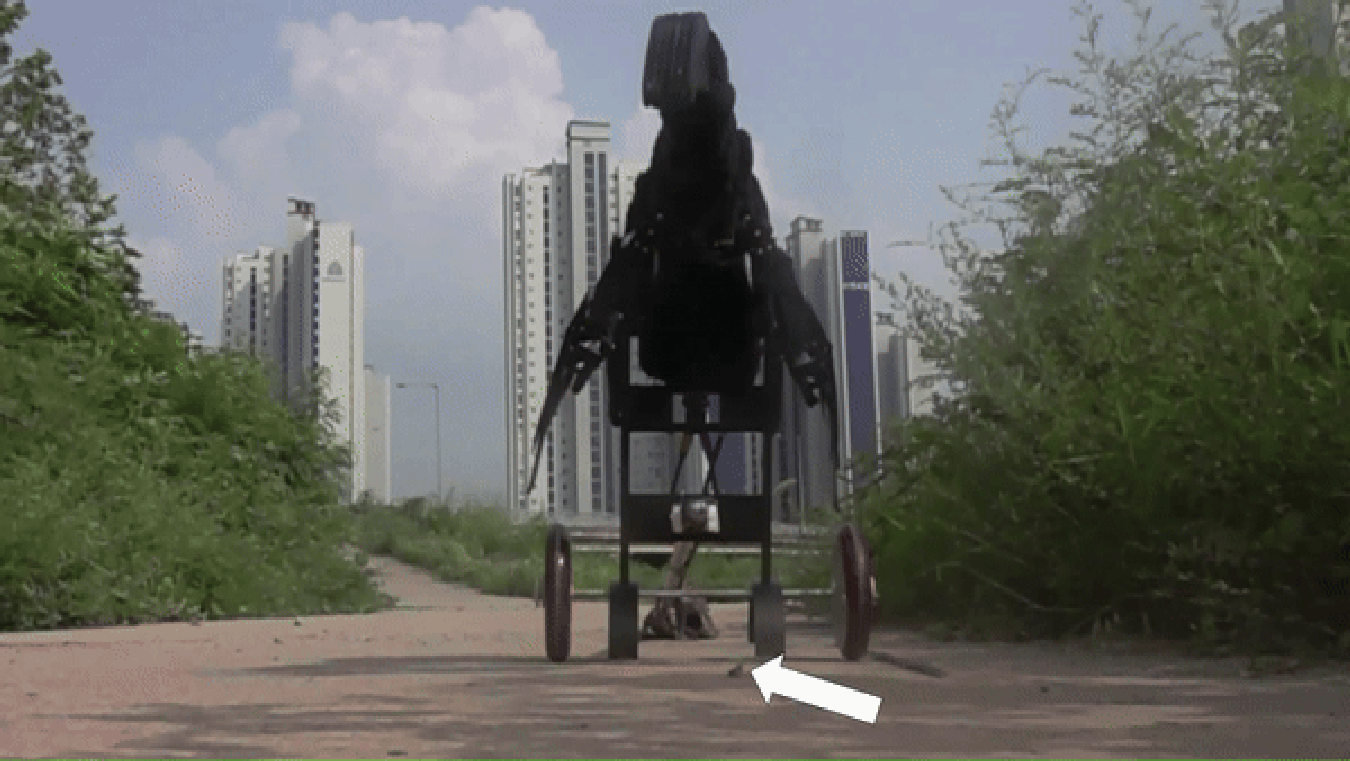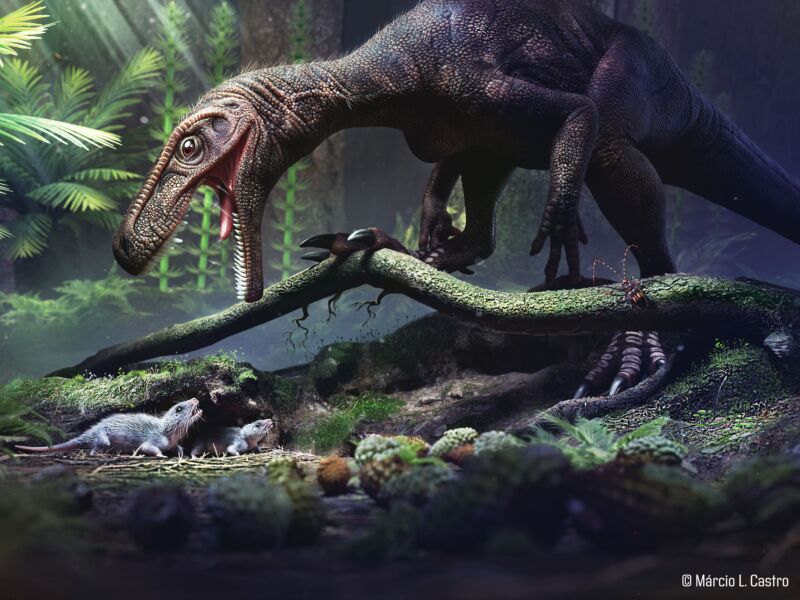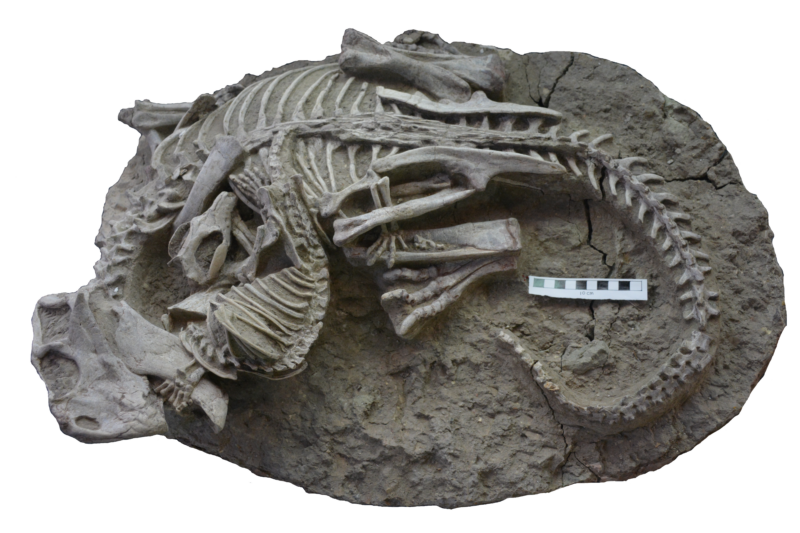
Enlarge
/
Grasshoppers, beware! Robopteryx is here to flush you from your hiding place. (credit: Jinseok Park, Piotr Jablonski et al., 2024)
Scientists in South Korea built a robotic dinosaur and used it to startle grasshoppers to learn more about why dinosaurs evolved feathers, according to a
recent paper
published in the journal Scientific Reports. The results suggest that certain dinosaurs may have employed a hunting strategy in which they flapped their proto-wings to flush out prey, and this behavior may have led to the evolution of larger and stiffer feathers.
As
reported previously
, feathers are the defining feature of birds, but that wasn't always the case. For millions of years, various species of dinosaurs sported feathers, some of which have left behind fossilized impressions. For the most part, the feathers we've found have been attached to smaller dinosaurs, many of them along the lineage that gave rise to birds—although in 2012,
scientists discovered
three nearly complete skeletons of a "gigantic" feathered dinosaur species,
Yutyrannus huali,
related to the ancestors of
Tyrannosaurus Rex
.
Various types of dino-feathers have been found in the fossil record over the last 30 years, such as so-called
pennaceous feathers
(present in most modern birds). These were found on distal forelimbs of certain species like
Caudipteryx
, serving as proto-wings that were too small to use for flight, as well as around the tip of the tail as plumage. Paleontologists remain unsure of the function of pennaceous feathers—what use could there be for half a wing? A broad range of hypotheses have been proposed: foraging or hunting, pouncing or immobilizing prey, brooding, gliding, or wing-assisted incline running, among others.
chevron_right






